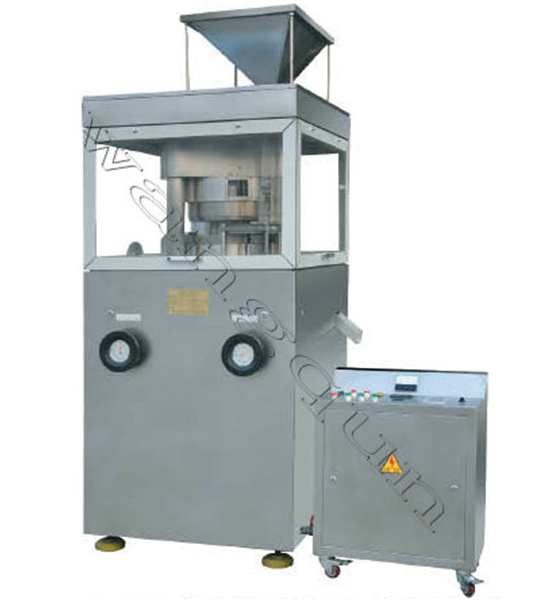
Troubleshooting Powder Sticking in Tablet Press Dies
Introduction
Powder sticking in tablet press dies is a common issue in pharmaceutical manufacturing that can lead to poor tablet quality, production delays, and increased costs. Sticking occurs when powder adheres to the die walls or punch faces, resulting in uneven tablet weight, surface defects, and potential machine downtime. This guide explores the root causes of sticking, preventive measures, and troubleshooting techniques to optimize tablet production.
---
Causes of Powder Sticking in Tablet Press Dies
Several factors contribute to powder sticking, including formulation properties, machine settings, and environmental conditions.
1. Formulation-Related Causes
a. Poor Flow Properties
- Powders with poor flowability may not distribute evenly in the die, leading to inconsistent compression and increased friction.
- Solution: Improve powder flow by adding glidants (e.g., colloidal silicon dioxide, talc) or optimizing granulation.
b. High Moisture Content
- Hygroscopic powders absorb moisture, increasing adhesion to die walls.
- Solution: Control humidity in the manufacturing area and use desiccants if necessary.
c. Low Melting Point Ingredients
- Some excipients or APIs may soften or melt under compression heat, increasing stickiness.
- Solution: Adjust compression force or use lubricants (e.g., magnesium stearate) to reduce adhesion.
d. Insufficient Lubrication
- Inadequate lubricant concentration or improper mixing can lead to sticking.
- Solution: Optimize lubricant type (e.g., stearates, PEG) and blending time.
---
2. Machine-Related Causes
a. Improper Tooling Condition
- Worn or scratched dies and punches increase friction and sticking.
- Solution: Regularly inspect and polish tooling; replace damaged components.
b. Incorrect Compression Force
- Excessive force can cause excessive heat and material adhesion.
- Solution: Optimize compression settings based on formulation requirements.
c. Poor Die Wall Cleaning
- Residual powder buildup increases sticking risk.
- Solution: Implement frequent die cleaning and use anti-adhesion coatings if needed.
d. Punch Tip Design
- Flat-faced punches increase contact area, raising sticking risk.
- Solution: Use concave or beveled punches to reduce surface contact.
---
3. Environmental Factors
a. High Humidity
- Moisture absorption increases powder adhesion.
- Solution: Maintain controlled humidity (typically 30-50% RH) in the compression area.
b. Temperature Fluctuations
- Heat from compression or ambient temperature changes can affect material properties.
- Solution: Monitor and stabilize press temperature.
---
Troubleshooting Steps for Powder Sticking
Step 1: Evaluate Formulation
- Check moisture content (use Karl Fischer titration if needed).
- Assess lubricant concentration and distribution (ensure proper blending).
- Consider adding anti-adherents (e.g., talc, colloidal silica).
Step 2: Inspect Tooling
- Examine dies and punches for wear, scratches, or pitting.
- Polish tooling surfaces if roughness is detected.
- Replace damaged components if necessary.
Step 3: Optimize Machine Settings
- Adjust compression force to avoid excessive heat generation.
- Ensure proper dwell time to allow uniform tablet ejection.
- Verify punch alignment and turret speed.
Step 4: Improve Environmental Control
- Monitor and adjust humidity levels in the compression area.
- Use dehumidifiers if necessary.
Step 5: Implement Preventive Measures
- Use die wall lubrication (e.g., external magnesium stearate spray).
- Apply anti-stick coatings (e.g., chrome plating, PTFE coatings).
- Optimize tablet design (e.g., avoid deep embossing that increases surface contact).
---
Advanced Solutions for Persistent Sticking
1. Use of Alternative Lubricants
- If traditional lubricants fail, consider synthetic alternatives (e.g., sodium stearyl fumarate).
2. Modified Punch Face Design
- Use embossed or engraved punches to reduce sticking surface area.
3. Pre-Compression Adjustments
- Apply a light pre-compression to reduce air entrapment and improve powder distribution.
4. In-Line Monitoring
- Implement real-time weight and thickness monitoring to detect sticking early.
---
Conclusion
Powder sticking in tablet press dies is a multifaceted issue requiring systematic troubleshooting. By analyzing formulation properties, optimizing machine settings, and maintaining proper environmental conditions, manufacturers can minimize sticking and improve tablet quality. Regular tooling maintenance, proper lubrication, and advanced techniques such as die coatings can further enhance production efficiency. A proactive approach ensures consistent tablet performance while reducing downtime and waste.
Implementing these strategies will help achieve smooth tablet compression, ensuring high-quality pharmaceutical products with minimal operational disruptions.
حقوق الطبع والنشر © 2025 Changzhou Wangqun Pharmaceutical Machinery Co. ، Ltd. جميع الحقوق محفوظة.
خريطة الموقعيستخدم هذا الموقع ملفات تعريف الارتباط لضمان حصولك على أفضل تجربة على موقعنا.
تعليق
(0)